Earlier this year, we explained the differences between an Ulster and a Guards Coat. Today, we continue this overcoat series with a conversation about the Paletot, a double-breasted topcoat with peaked lapels.
The Origins And History Of The Paletot
The term originally derives from the word Palla, which was a kind of Roman greatcoat. Later, the Spanish invented a garment called the palletoque, which was similar to a frock coat with vertical folds. During the eighteenth century, the French developed the word paletot as an umbrella term for various overcoats.
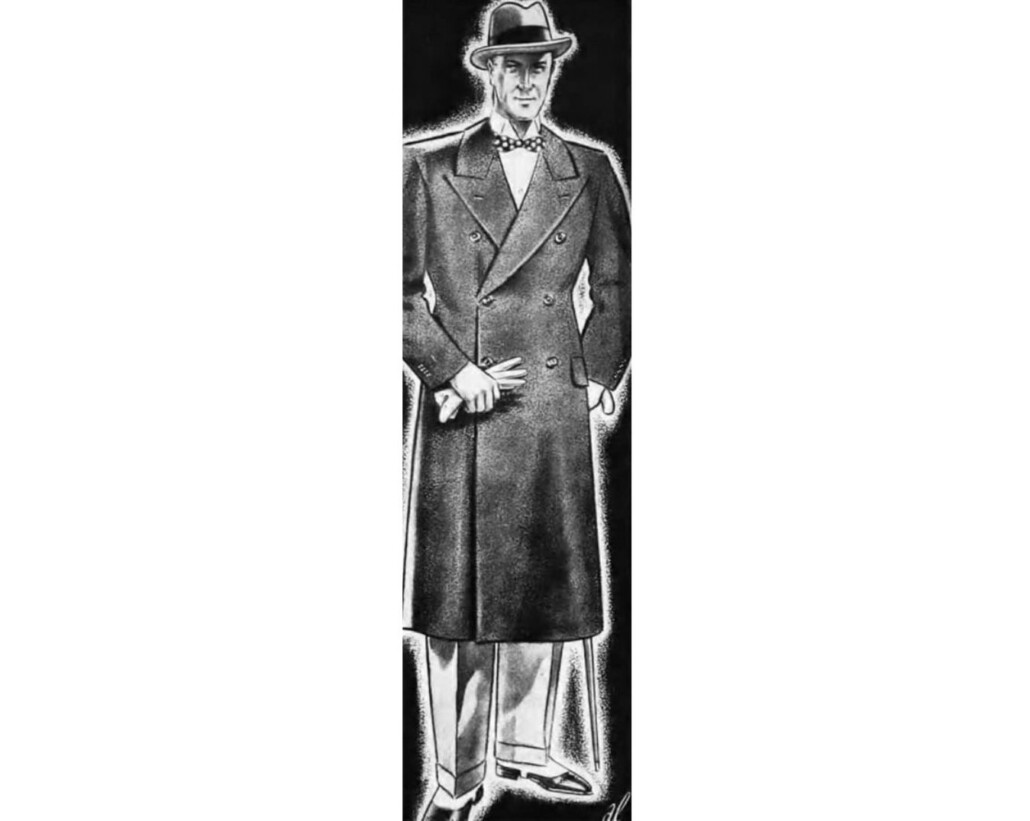
In the mid 19th century, a paletot was considered to be a waisted or at least slightly waisted overcoat with certain peculiarities with regard to its cut. Many paletots resembled a frock coat and could be worn without a vest-like undercoat. In detail, the features were as follows:
- Paletots generally had no waist seam, although some had one in the front only, which was placed below the waist-level. Often, a back seam or a back vent were non-existent, but if present, the vent was quite short.
- A paletot always showed some form of side seams, while side pleats were usually absent.
- The fronts were sometimes fastened by a fly and, occasionally, buttons reached down to the hem of the topcoat.
- The number of pockets on a paletot varied, but they were generally found on the outside and tailored either as flap or as slip pockets.
- The Paletot-Sac was a short version of the regular paletot and did not have any waist suppression, hence the name. Sometimes, it featured a lined hood instead of a collar and it was generally single breasted.
- Another variety of the paletot was the Twine, as the French call it, or English Wrap, which was often double-breasted and resembled a loose Chesterfield.
By the end of the nineteenth century, the term evolved to include only overcoats worn in town. At the beginning of the twentieth century, the British considered a paletot to be any topcoat with waist suppression, while Americans defined it as an ankle-length topcoat, seam-waisted and with a flared silhouette. In the 1920s, the term Chesterfield arose, which was a single-breasted overcoat with a hidden fly front. In order to distinguish between the different overcoat types, the term paletot was used in Europe to describe a very special kind of double-breasted top coat.
The Characteristics of a Paletot
It is still the standard today, and defined by the following characteristics:
- Double breasted with a 6×2 button arrangement.
- The top buttons have a wider button stance and are not buttoned at all.
- It must have peaked lapels.
- The coat is semi-fitted to fitted and has a flat back without a belt.
- The pockets are aligned with the middle buttons.
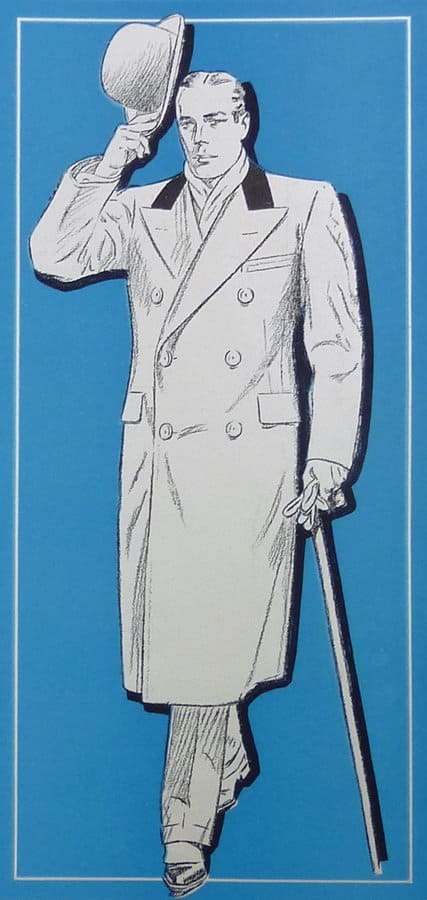
The Paletot in Everyday Appearance
Interestingly, there is no strict rule with regard to color or fabric. Nevertheless, the paletot is usually made of dark, plain fabrics. Also, the length is not set in stone. Everything from around knee length to ankle length is acceptable, though most coats are about knee length.
Fortunately, rules for topcoats have never been strictly applied, and consequently, there are lots of paletot variations. Instead of having a 6×2 button configuration, one could choose 6×3 or 4×2. Also, the closing button position could be moved up or down, and the same is true for the pockets. Apart from that, slanting pockets would be a good alternative and a ticket pocket might add an elegant touch. If one likes unusual details, a velvet collar in a contrasting color or elegant cuffs could be a good addition. Bear in mind that the Guards coat is simply a paletot variation with a belted back and a 6×3 configuration.

As you can see, the Paletot has a wide spectrum of use and is the ideal companion for a number of occasions.
In a plain navy cloth, it is the perfect city topcoat that can be worn with pinstriped suits as well as with tuxedos, or even tailcoats. It is also a great choice for a Stroller suit or a morning coat. With the addition of a detachable fur collar or lapels and cuffs of matte silk, it becomes a very special evening overcoat. It looks particularly dapper with a contrasting velvet collar.
If you are looking for one coat that is suitable for almost all occasions, then a paletot made of flannel or tweed in charcoal or navy might be the best choice. For example, a plain dark gray and blue tweed paletot can be worn with a plaid tweed suit as well as with a business suit or evening wear, and I am sure the wearer will always look quite well put together.
Especially for students or gentlemen with a limited budget, the Paletot is an ideal topcoat that is suited for such a wide range of events and occasions. Later in life, you can upgrade and refine your topcoat wardrobe, but there is always room for a good paletot.
The paletot today still has a plain back which is an ode to the town heritage. Overall, it is a very classic simple and sophisticated overcoat that will never disappoint. Especially if you’re starting out, I think it’s a great choice and you can always add coarser tweed overcoats later on but in the beginning, it makes sense to have one overcoat that works for you in many occasions.
In conclusion, the paletot is a very versatile overcoat that has stood the test of time and you will be able to wear it many years from now without any alterations or changes. On top of that, it can be combined with most everything from formal wear down to casual wear and you will always cut a good figure in it. Typically made of wool or cashmere or blends thereof, it usually keeps you warm especially because it has double layers over your chest area.
Outfit Rundown
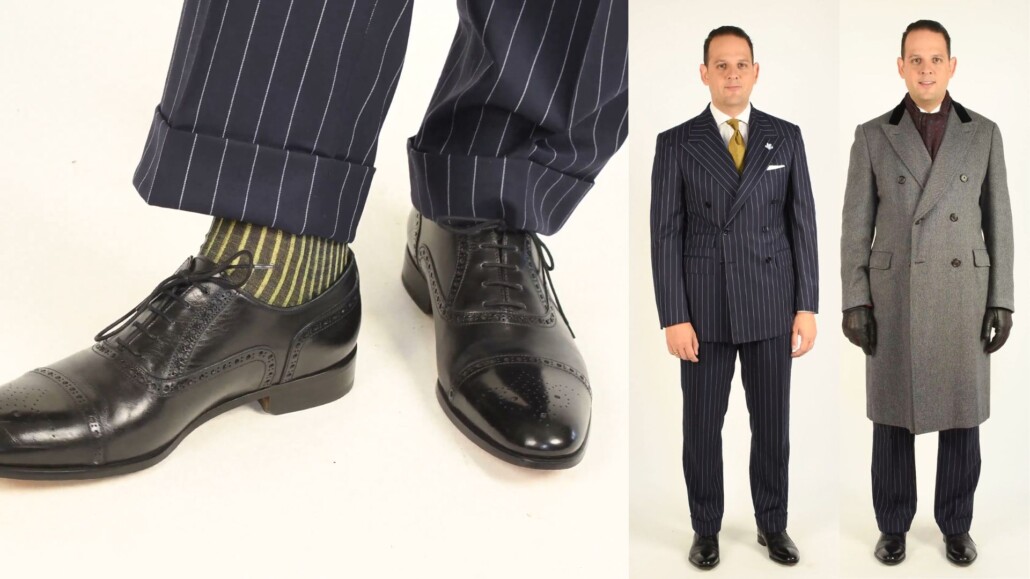
I am wearing the classic overcoat shape with a black velvet collar and a thicker wool fabric in black gray and blue. It was made by Chester Barrie in England and I found it vintage for about a hundred dollars. All I had to do was to let the sleeves out because it was originally too short. I have had this overcoat for about eight years and it served me very well. I combined it with a double-breasted pinstripe suit from Ralph Lauren in navy and I have black Oxfords yellow and navy socks so they tie the shoes together with the pants as well as the tie. For my gloves, I opted for the black peccary gloves which are cashmere lined and have red X stitching and colors in between the fingers so it works well with my black velvet collar as well as the fabric and the kind of burgundy scarf I’m wearing.
What do you think of the paletot coat and what items would you wear with it?
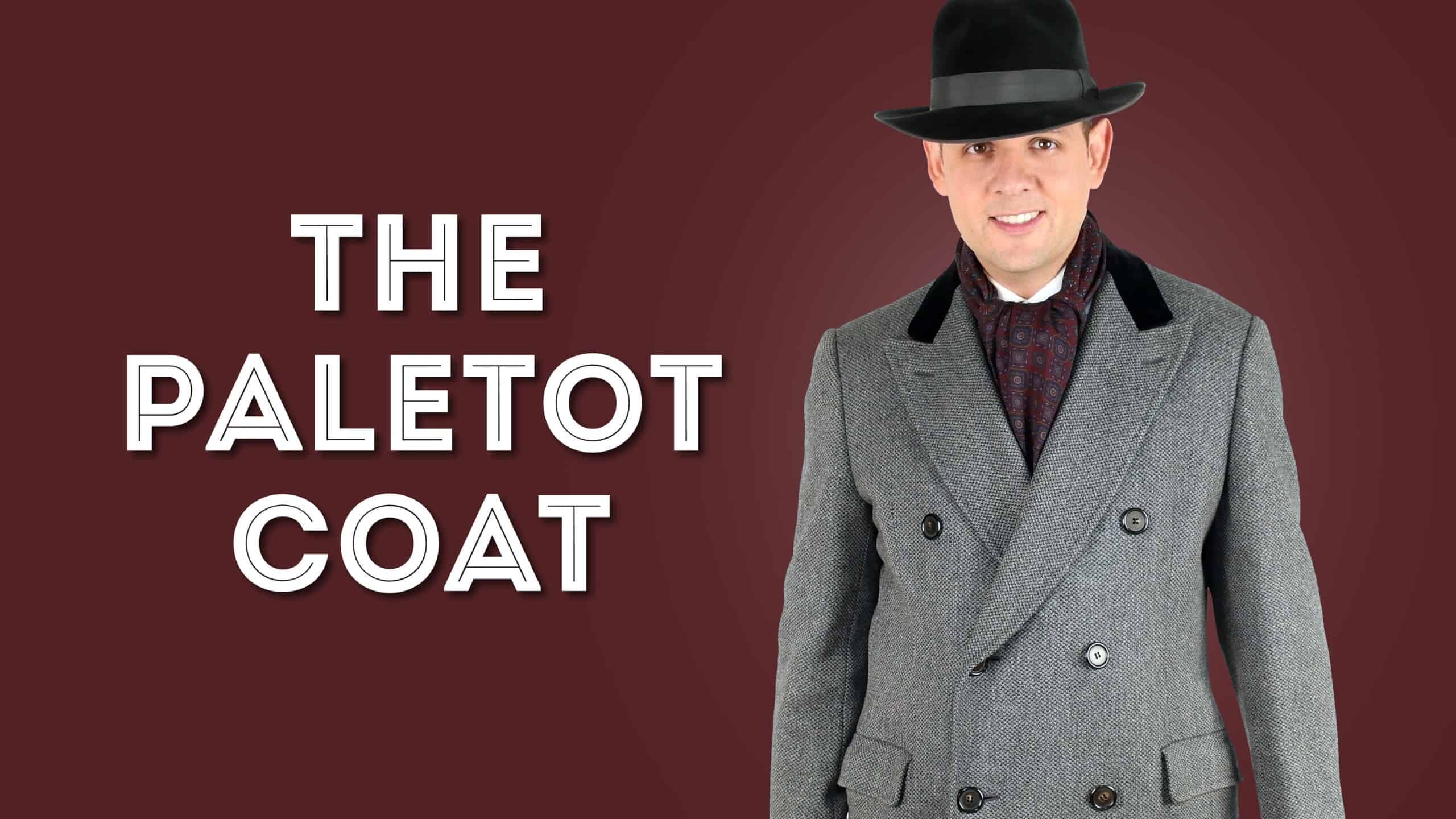

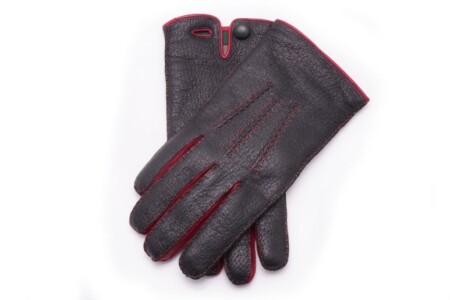
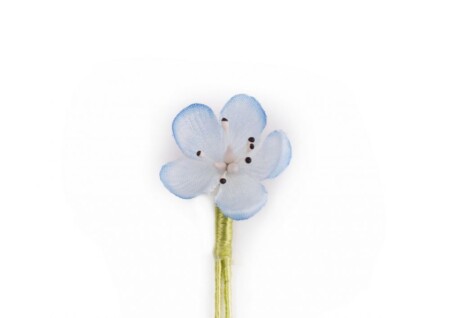
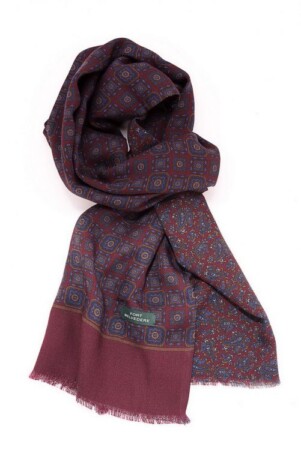
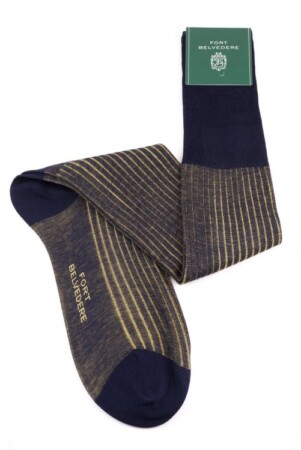
Thanks Raphael, another excellent video. I like your coat a great deal, although I wouldn’t wear the mustard yellow gloves with the mustard scarf myself, as they are very similar in colour and look too matchey-matchey to me.
Hope to hear back from you as to where to find a Paletot with a velvet collar!! I wrote this question previously but have not received any response from Gentleman’s Gazette. Thank you in advance for your anticipated reply.
Select the velvet fabric of your choice and take your coat to an alterations tailor to add the collar. I have done this with several with excellent results.